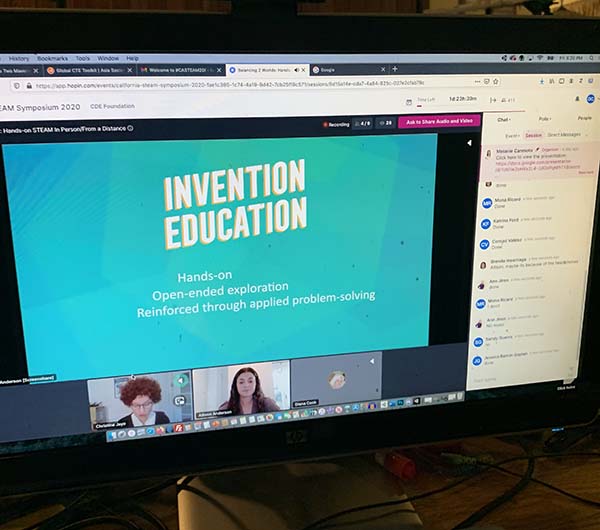by Dot Cannon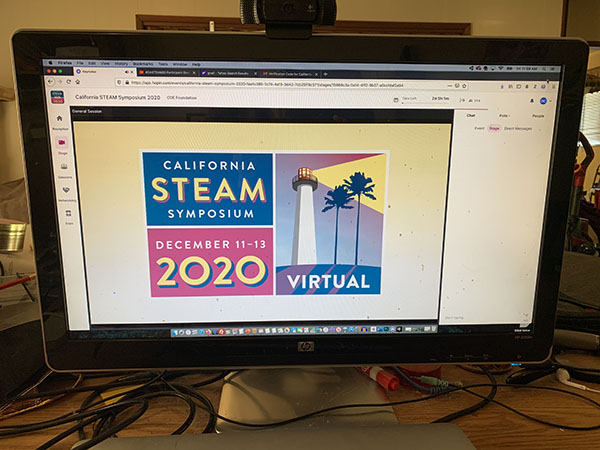
The eighth annual California STEAM Symposium is happening now! It’s going on through Sunday, December 13th, and bringing together educators from all over the world.
And it’s happening in a completely virtual format.
The California STEAM Symposium focuses on giving students ownership of their own learning, through hands-on experiences.
Science, technology, engineering, art and math are all a part of this equation. Students learn creative problem-solving and collaborative skills through combining the disciplines–and making things. Californians Dedicated to Education Foundation, California Commission on the Status of Women and Girls and the State of California Department of Education are the co-hosts of the event,
Before Friday’s Day One main presentations even started, we had found something cool and STEAMy.
Visiting the Virtual Expo, we met inventor Max Schafer, creator of Art Rods. These are bendable modeling material. They have foam on the outside, wire on the inside. With them, students can create–well, just about anything.
Max explained that he had taught both fifth grade and kindergarten for 37 years.
(“I wanted something to show kids how to make letters of the alphabet,”) he explained.
Art Rods won a 2018 PAL Award as an exceptional toy that promotes language learning. But kids use them to make a lot of other things. Hearts, crazy hats, a bicycle and flowers are just a few of the creations pictured on the Art Rods website.
And as Max demonstrated–now they can light up, too!
A master teacher in a virtual makerspace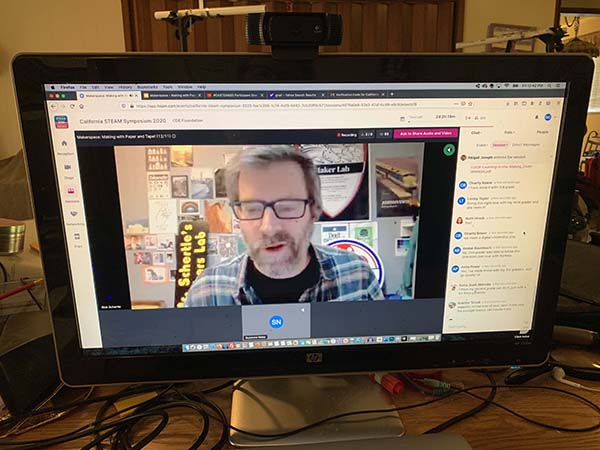
“We’re in a time where it’s all about working with what you have,” said Steindorf STEAM School K-8 Maker Lab Teacher Rick Schertle.
The virtual Makerspace had just opened. Attendees were getting ready to be creative with just paper and scissors. Their Day One project: zines.
“You can do all kinds of creative things with this little zine,” said Rick. He then took his audience through the process of creating an eight-page zine, from one piece of printer paper.
Rick, who said he teaches 400 K-8 students remotely each week, gave a number of resources. Among the sources he named for project ideas were The Tech Museum, in San Jose, and Instructables.com.
And elaborate materials aren’t necessary.
“These are all projects that can be made with paper, tape and just a few more things,” he said., showing a slide that listed paper “glider”-style airplanes, an “Easy Build” kite, and even paper roller coasters.
After the day’s zine session, Rick invited attendees to come back and join him for Makerspace sessions both Saturday and Sunday mornings. On the agenda: paper rockets, and paper towers, respectively.
“We did one of these (paper rockets) last year (at California STEAM Symposium in Anaheim), and we actually stuck one up on the ceiling. (That was exciting,)” Rick said.
A groundbreaker looks to the future
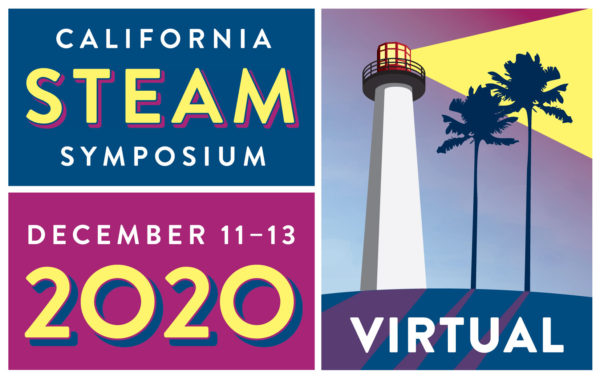
(Graphic courtesy of Californians Dedicated to Education Foundation, and used with permission.)
Friday’s keynote was a fireside chat with Olympic medalist/entrepreneur Ibtihaj Muhammad. California Commission on the Status of Women and Girls Executive Director LaKenya Jordan served as moderator.
“I am actually from New Jersey,” Ibtihaj said, in response to LaKenya’s question about her background. “My mom taught for over thirty years. My dad is a retired narcotics detective.
“I actually started fencing,” she continued, “because it accommodated my religious beliefs.”
Ibtihaj explained that, as a student, many of the sports teams’ uniforms were more revealing than either she or her parents liked. But then, she and her mom were driving past a high school one day. They saw a sports team wearing long white jackets and pants.
“My mom said, ‘I don’t know what (sport) that is, but when you get to high school, I want you to try it out.”
And fencing, she said, opened up “so many doors” for her.
“I think it taught me how to accept myself…but also how to appreciate others, and what they bring to the table.”
Asked by LaKenya how girls can be encouraged to take the “harder” math and science courses as they get older, Ibtihaj explained that she had been a talkative and curious student. Her teachers, she said, were not always patient or supportive.
“Sometimes we’re trying to dull that energy, those things that make us different from other people. I always wanted to learn more. (I’m thankful my mom was an educator.)”
LaKenya and Ibtihaj discusssed ways education can become more equitable. Accurate teaching of history, and the power of words were two areas they covered.
The power of words
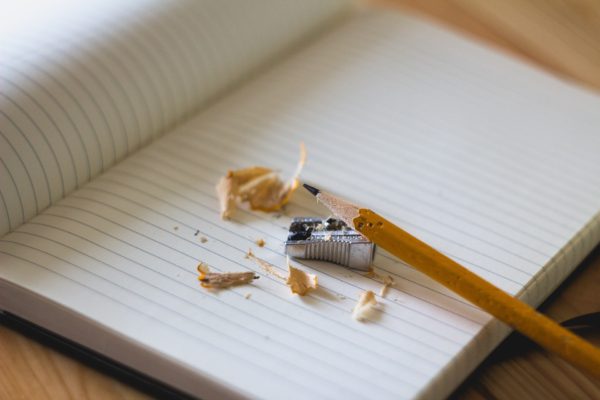
(Royalty-free image by Free Photos from Pixabay.)
“How do you think the classroom plays into this whole adage that, ‘It takes a village’?” LaKenya asked.
“I believe that our words go a long way,” Ibtihaj said. “I think we’ve all had a teacher who said something that has stuck with us throughout our lives.
“I had a coach who told me I could be one of the best fencers in the world…and it changed the way I saw myself in sport.”
That change, she said, was dramatic. She climbed to a world ranking of seventh, after having been in the 256th spot.
In the final minutes of their fireside chat, LaKenya and Ibtihaj further explored the power of words.
One aspect they discussed: self-talk, as it applies to teachers dealing with the current stresses of the pandemic.
Words of affirmation, Ibtihaj said, had brought her through a period of depression.
“I started my day off with affirmations, telling myself I could beat (that opponent). My affirmations kind of saved me.”
Ibtihaj, after whom Mattel modeled a hijab-wearing version of their Barbie doll following her Olympic medal win, said that without those positive words, none of her accomplishments would have happened.
“There would be nothing without me learning to believe in myself.”
Another milestone
Ibtihaj talked about her latest accomplishment.
“I have a new book coming out. I’m officially a children’s book author,” she said, displaying a copy of her book, The Proudest Blue.
“Growing up, I didn’t see myself represented in children’s books. I have some exciting news (that will come out in a couple of weeks).”
Prior to her closing remarks, Ibtihaj took a minute to ask the educators on the Zoom call to create one positive affirmation of their own.
“I believe greatness lives within all of us,” she said. “And I wish all the teachers on the call a beautiful school year.”
Collaborating with the world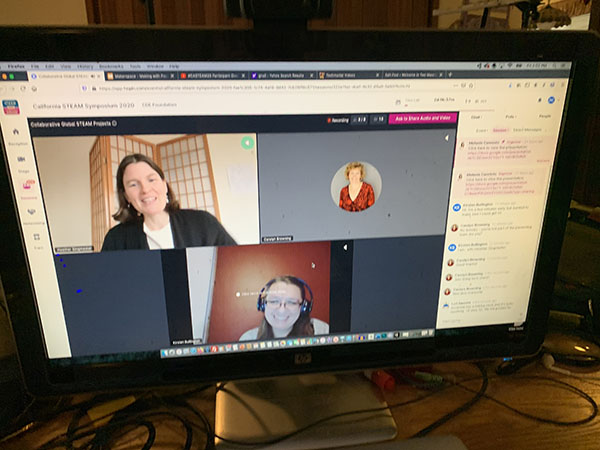
Thankfully, California STEAM Symposium breakout sessions were being recorded. As usual, several we’d like to have attended were happening at once, during both morning and afternoon.
But “Collaborative Global STEAM Projects”, with Heather Singmaster and Kirstin Bullington, explored some exciting possibilities.
Heather, who is Director of Career Technical Education and the Global Cities Education Network at Asia Society, outlined the steps to begin collaborative exchange projects.
“We work with students across the U.S., and we find students are much more engaged when (involved in) this type of work,” she said.
What was needed, Heather said, was a mindset of building a true partnership. “You both have a lot to offer,” she said.
Kirstin, who teaches science and engineering at Richland Two Institute of Innovation in Columbia, South Carolina, said her students had encountered others’ misconceptions about the international collaboration projects in which they’re involved.
“Our school shares space with the community, so we have a lot of visitors that come through in a normal year,” she said. “(I’ve seen my students politely correct visitors’ misconceptions) about their partnership with cities such as Senegal.”
Among the projects her students had developed in collaboration with their African counterparts, Kristin said, were solar chargers for study lights and cell phones. Then, five years later, they developed a larger solar energizing system.
And this year. they worked with students just outside of Capetown, to assemble a solar science station for a community center.
Resources and a plan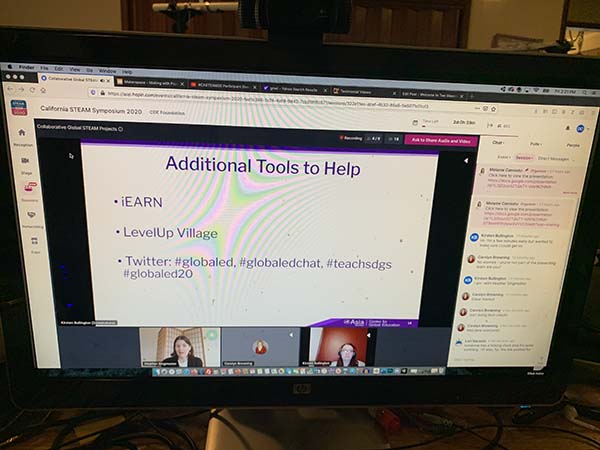
Heather and Kirstin discussed resources for getting started with partnering with students in other countries. Among the ones they mentioned: four Twitter hashtags! Kirstin said one of those four had worked well for her: “My students have partners from all over the world.”
“Once you’ve found your partner, really work to create a substantive project,” Heather advised the teachers on the call.
“(Make it a collaboration, rather than simply conversation.) Come to the table..with sort of a list of things you want to teach…and you need to be sure it meets both your curricular goals.”
Invention and imagination
“(Back in March), most educators told us that student engagement plummeted,” said National Inventors Hall of Fame Western Regional Program Manager Christine Jayo, during her afternoon breakout session, “Balancing Two Worlds: Hands-On STEAM In Person and At a Distance”.
“Many teachers discovered that the root cause of (this) problem was…the lack of empowerment.”
But invention education, she said, empowered students through hands-on learning, and gave them confidence.
Christine referenced nine-year-old Marissa Streng, who, while in third grade, invented a product that would better dry her dog, Mojo, after his bath. Today, she said, Marissa is in college–and is an entrepreneur, with her patented and trademarked “Dog Dryer” on the market.
“(Invention education) really does celebrate the power of imagination,” Christine continued. “It provides the perspective that good ideas could be pathways to entrepreneurship and careers.
“At National Inventors Hall of Fame, we believe this just might be our opportunity to change the way teachers and students work together. We really, firmly believe that children learn by being creative, solving problems…and having fun.”
The “How-to” of implementation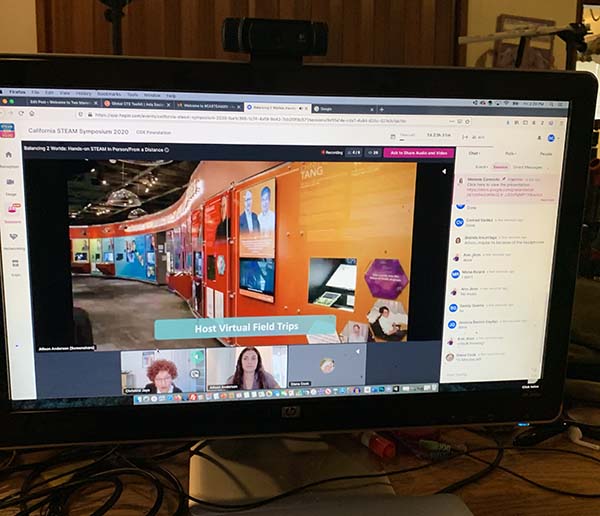
So, how can teachers implement invention education into their curricula? Imagination, she said was key.
“We really admire…when you’re teaching a session on dinosaurs and come in dressed like a paleontologist,” Christine commented.
Among the resources she suggested for teachers in virtual and blended settings, were the Google Arts and Culture link, for virtual field trips, as well as the National Inventors Hall of Fame.
“We invite you to take students on a virtual field trip to our museum,” she said.
And she told the attendees that the National Inventors Hall of Fame has a STEM educational outreach which they might like to access.
“We have approached this (pandemic) challenge by packaging materials individually, by student,” she said.
One such project is seasonal: “how to have fun with coal, if it shows up in your stocking”!
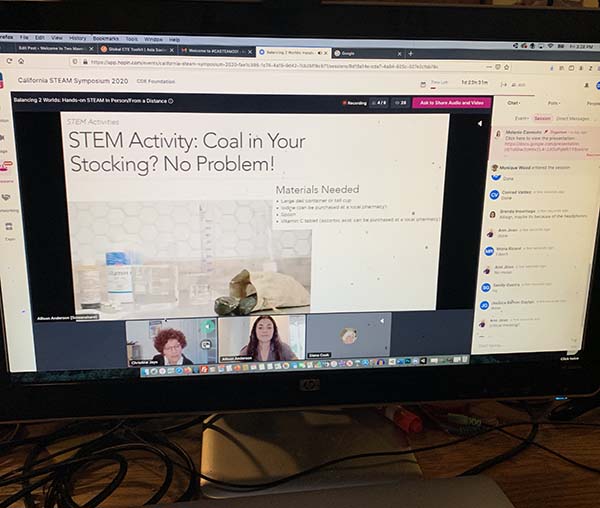
“It kind of has a ‘wow’ factor,” Christine said of the kit,”because when you put the tablet in the water, the water changes color.”
Talent and new perspectives
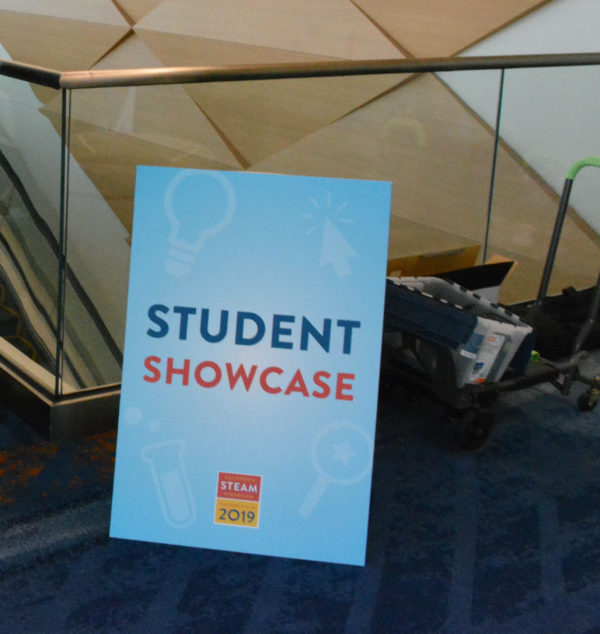
(Student showcase sign from Calidornia STEAM Symposium, Anaheim, 2019.)
Day One of the eighth annual, and first virtual, California STEAM Symposium was ending. But we weren’t about to miss the virtual Student Showcase.
Art, drama, music, science and lots of creativity were showcased, in the videos we saw. Selecting any one or two as highlights hardly seems fair, as they were all excellent.
However, the video, “Building Hope”, about the White Mountain Apache tribe from Arizona and the introduction, of sixty students, to the VEX Robotics Challenge, was a standout personal favorite. So was the “Drama Rocks” animation, which student Kathy T. drew and voiced with classmates Micaela J. and Audrey R.
What a great first (virtual) day! California STEAM Symposium, we’ll see you in the morning.
The eighth annual, and first virtual, California STEAM Symposium, co-hosted by nonprofit Californians Dedicated to Education Foundation, continues with keynotes, breakout sessions and maker activities on jSaturday, December 12th, and Sunday, December 13th. Saturday’s sessions start at 9:20 am PST, and Sunday includes “Family Day”, with maker activities for everyone! Here’s the link for more information.

